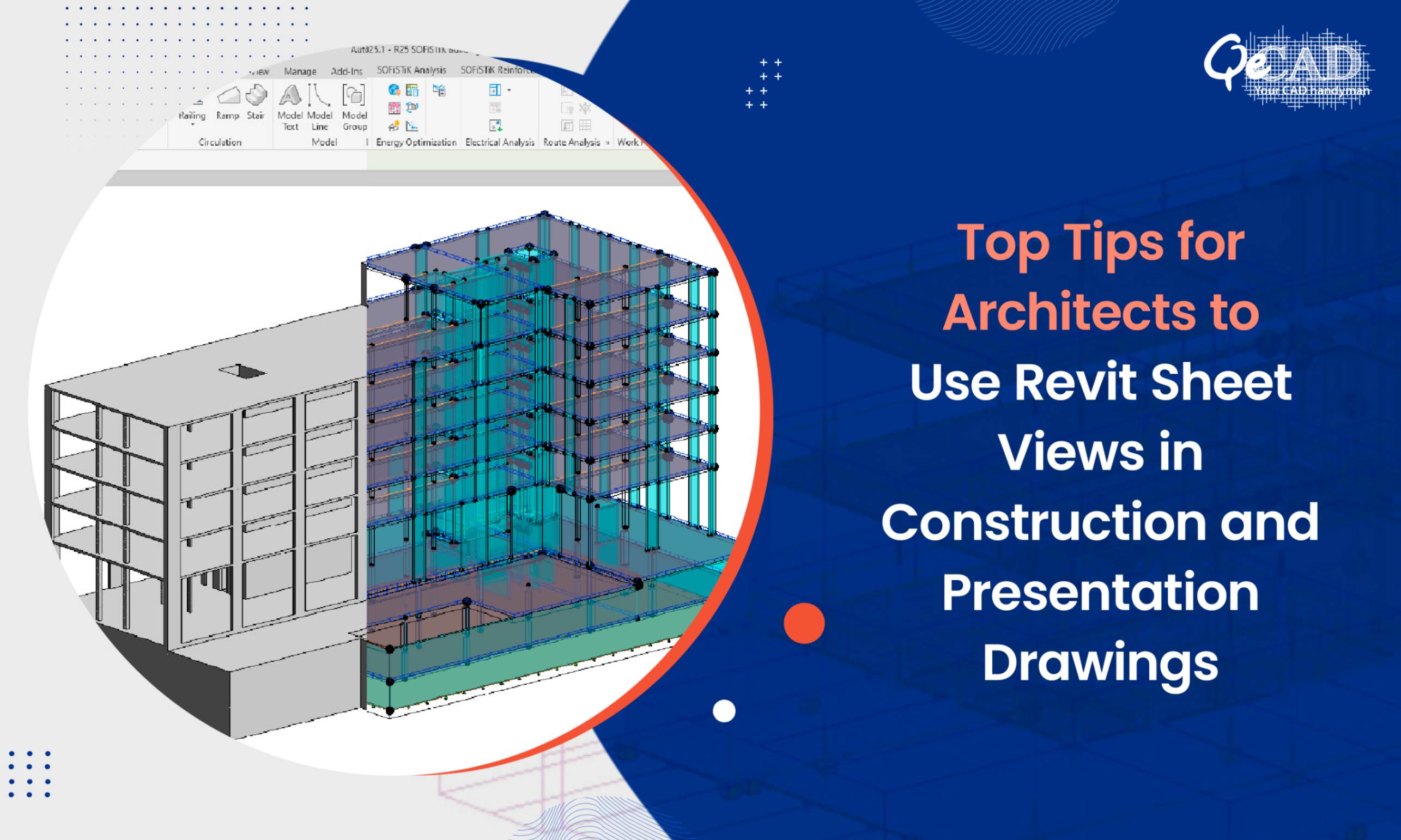
Producing precise, professional and visually consistent drawings is one of the important aspects of architectural design. Architects today need to deliver the documents that not only communicates the technical details accurately but also presents the design intent in a clean and visually appealing format. Revit Sheet Views are a powerful tool that helps the architects to achieve both — combining efficiency with the clarity for construction documents along with the presentation drawings.
Why Revit Sheet Views Matters?
Sheet Views in Revit serve as the final canvas where the multiple drawings, details, schedules and views come together. Instead of managing numerous separate files, architects can centralize their drawings within a highly coordinated model. This ensures the consistency across documentation while saving hours of manual adjustments.
With Revit Sheet Views, architects can:
- Maintain consistency: All drawings update automatically when the model changes hence ensuring the accuracy in both construction documents and presentation graphics.
- Organize layouts effectively: Sheet Views allows easier management of the multiple drawings, from plans and elevations to sections and details.
- Balance technical depth with aesthetics: Architects can present professional-grade documents with clear hierarchies, line weights and annotations.
Best Practices for Using Revit Sheet Views
- Establish a Consistent Sheet Template
Set up a standard template with title blocks, logos, project data and text styles. Templates help maintain a recognizable brand identity while streamlining the workflows.
- Use View Templates for Control
Apply view templates to ensure the consistent scales, line weights, hatching and visibility settings across all sheets.
- Organize Plans and Details Intelligently
Logically group drawings — such as keeping all floor plans together and sections/details on separate sheets — for better clarity and site usability.
- Leverage Annotations Wisely
Use intelligent tags and dimensions thoughtfully. Strike a balance between the clarity and readability to avoid any sort of clutter.
- Incorporate Graphic Enhancements for Presentations
Employ the shaded views, renderings and filled regions for client-facing presentations to enhance the visual appeal.
- Manage Revisions with Clarity
Utilize revision clouds, version control tools and schedules to ensure that the stakeholders always refer to the latest drawing set.
Quality Control Essentials
Maintaining quality in Revit sheet views is about more than just appearance — it’s about accuracy, consistency and compliance. Key QC checks includes:
- Title block accuracy: Confirm project information, sheet numbers and revision dates are up to date.
- View alignment: Ensure views are properly aligned and scaled for the readability.
- Annotation consistency: Check for uniform text sizes, line weights and dimensioning standards.
- Graphic clarity: Eliminate the overlapping elements, cropped details or unnecessary annotations.
- Revision tracking: Verify revision clouds and notes are correctly placed and documented.
Regular QC audits before issuing drawings significantly reduces the errors and RFIs during the construction.
Value Table: Revit Sheet Views for Architects
| Feature | Architectural Value |
| Dynamic Model Linkage | Automatic updates reduce rework and inconsistencies. |
| Standardized Templates | Ensures branding and consistency across project deliverables. |
| View Templates | Saves time while maintaining graphic clarity. |
| Intelligent Annotations | Increases accuracy by linking directly to model elements. |
| Revision Management | Enhances transparency and accountability across teams. |
| Presentation-Ready Graphics | Elevates client communication with visually engaging outputs. |
Common Pitfalls and Quick Fixes
Even the experienced architects can run into challenges while working with sheet views. Below are the known pitfalls and how to quickly address them:
- Pitfall: Overcrowded sheets with too many views.
Quick Fix: Distribute views logically across multiple sheets and apply consistent scales. - Pitfall: Inconsistent line weights or graphic styles.
Quick Fix: Apply view templates to enforce uniformity. - Pitfall: Misaligned or improperly cropped views.
Quick Fix: Use reference grids and alignment tools for accuracy. - Pitfall: Confusion in revision tracking.
Quick Fix: Always update revision clouds and sheet issue dates before release. - Pitfall: Overuse of annotations leading to clutter.
Quick Fix: Simplify notes, use intelligent tags, and rely on schedules for details.
Revit Sheet Views in the Bigger Picture
For many firms, leveraging Revit BIM Services allows them to optimize the workflows while maintaining the high-quality outputs. By integrating sheet views into daily practice, architects can produce documentation that aligns well with the industry standards, reduces the errors and enhances the collaboration with the consultants as well as the contractors. Firms offering Construction Documentation Services especially benefit, as sheet views streamlines the process of creating clear, accurate and visually appealing drawing sets.
Final Thoughts
Clean construction documents and compelling presentation drawings are essential for communicating the design intent and ensuring the smooth project execution. By mastering Revit sheet views — and pairing them with strong quality control practices — architects can deliver documents that are precise, consistent and presentation-ready every time.
